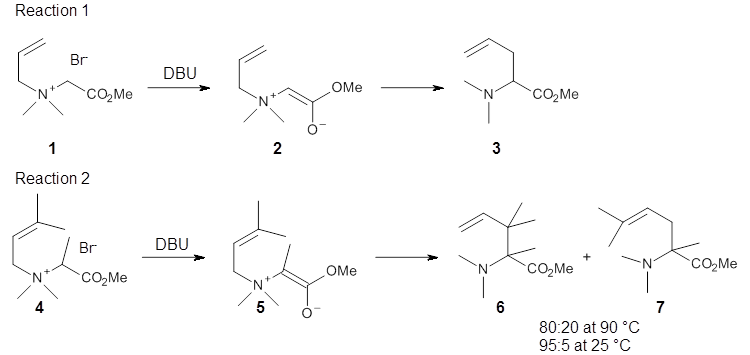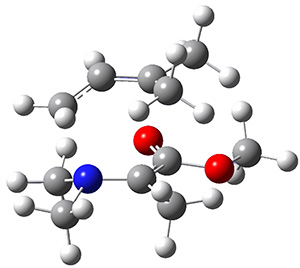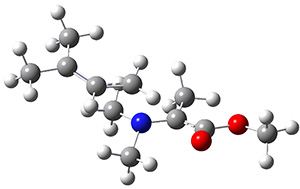Kozuch, S. Phys. Chem. Chem. Phys. 2015, 17, 16688-16691
Contributed by Steven Bachrach.
Reposted from Computational Organic Chemistry with permission

This work is licensed under a Creative Commons Attribution-NoDerivs 3.0 Unported License.
Contributed by Steven Bachrach.
Reposted from Computational Organic Chemistry with permission
Last year I wrote a post on the possibility of a stable hypercoordinated carbon in the C(CH3)5+ molecule as proposed by Schleyer and Schaefer.1 Kozuch has re-examined this molecule with an eye towards examining the lifetime of this proposed “fleeting” molecule.2
The computed barriers for either (1) loss of a methane molecule leaving behind the (CH3)2C+CH2CH3cation or (2) loss of an ethane molecule leaving behind the t-butyl cation are small: 1.65 and 1.37 kcal mol-1, respectively. Kozuch employed canonical variational theory with and without small curvature tunneling (SCT). Without the tunneling correction, the pentamethylmethyl cation is predicted to have a long (millennia) lifetime at very low temperatures (<20 K). However, when tunneling is included, the half-life is reduced to 6 and 40 μs for degradation along the two pathways. Clearly, this is not a fleeting molecule – its lifetime is really too short to consider it as anything.
Interestingly, perdeuterating the molecule ((CD3)5C+) substantially increases the half-life to 4 ms, a thousand-fold increase. Tritium substitution would further increase the half-life to 0.2 s – a long enough time to really identify it and perhaps justify the name “molecule”. What is perhaps the most interesting aspect here is that H/D substitution has such a large effect on the tunneling rate even though no C-H bond is broken in the TS! This results from a mass effect (a CH3 vs. a CD3 group is migrating) along with a zero-point vibrational energy effect.
References
(1) McKee, W. C.; Agarwal, J.; Schaefer, H. F.; Schleyer, P. v. R. "Covalent Hypercoordination: Can Carbon Bind Five Methyl Ligands?," Angew. Chem. Int. Ed. 2014, 53, 7875-7878, DOI: 10.1002/anie.201403314.
(2) Kozuch, S. "On the tunneling instability of a hypercoordinated carbocation," Phys. Chem. Chem. Phys.2015, 17, 16688-16691, DOI: 10.1039/C5CP02080H.
InChIs
C(CH3)5+: InChI=1S/C6H15/c1-6(2,3,4)5/h1-5H3/q+1
InChIKey=GGCBGJZCTGZYFV-UHFFFAOYSA-N
InChIKey=GGCBGJZCTGZYFV-UHFFFAOYSA-N

This work is licensed under a Creative Commons Attribution-NoDerivs 3.0 Unported License.




